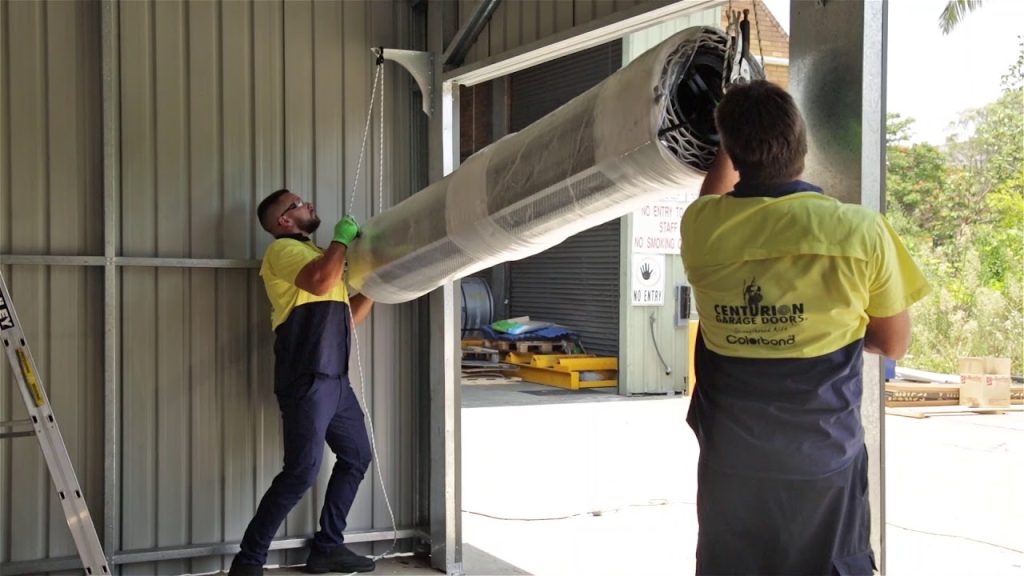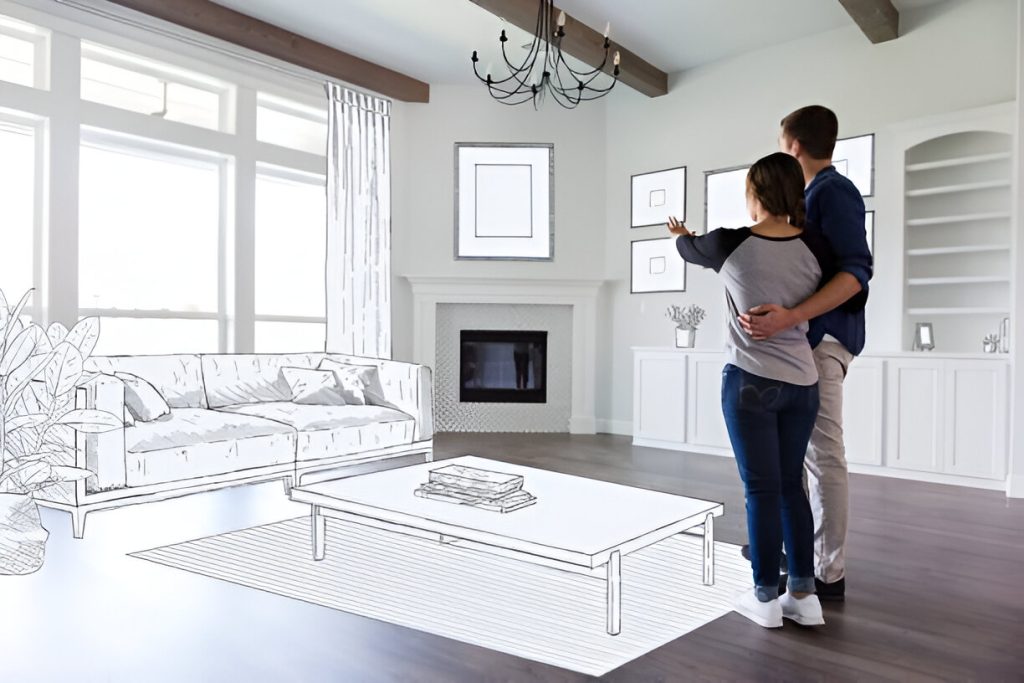Embarking on the journey of installing a roll-up garage door is like navigating a maze of possibilities to enhance your home’s security and convenience. As you begin this meticulous process, each step holds the key to a seamless installation that guarantees long-term benefits. With attention to detail and a steady hand, you will unravel the complexities of door placement and hardware attachment. Stay tuned to uncover the secrets of a successful roll-up garage door installation that will elevate your space to new heights of functionality and safety.
Roll-Up Garage Door Overview
When installing a roll-up garage door, it is crucial to understand the unique features and mechanics that set it apart from other types of garage doors. Roll-up doors offer several benefits such as enhanced security due to their thicker and more secure materials, typically 18-gauge metal panels. The rolling mechanism allows for smooth operation and minimal maintenance, making them a durable choice. Additionally, these doors can be customized to fit different sizes and styles, offering options for automation to improve convenience.
In terms of materials, roll-up garage doors often come with insulation options that help regulate temperature and provide soundproofing, adding to the security and comfort of your space. While the initial cost may be slightly higher than other garage door types, the durability and long-term benefits make them a worthwhile investment. Understanding the materials, rolling mechanism, maintenance requirements, insulation benefits, security features, customization options, automation possibilities, and overall cost are essential aspects to consider when choosing a roll-up garage door for your property.
Preparation and Measurements Check
Ensure a thorough preparation by meticulously checking measurements and confirming the alignment before proceeding with the installation of your roll-up garage door. Measurement accuracy is crucial for a successful installation process. Compare wall opening measurements with the door size to ensure a proper fit. Verify that the head and foot of the door opening are level, the door jambs are plumb, and the track is flush with the opening. Additionally, inspect all components to confirm they are in good condition and that all necessary tools needed for installation are available. Prioritize safety measures by double-checking all measurements and ensuring that all parts are securely in place before proceeding with the installation. By taking these steps, you will ensure a smooth and safe installation process for your roll-up garage door.
Placing Door and Hardware
To position the roll-up garage door and hardware correctly, begin by ensuring the floor is clean to prevent any damage to the curtain. Place the left track perpendicular to the opening, ensuring proper track alignment. As you work, be cautious of potential fire risks such as electrical wiring or appliances nearby, as these can become fire hazards in your kitchen or workspace. Position the hardware correctly, considering space considerations for maintaining door balance. Repeat these steps for the right side of the frame, securing bracket connections to prevent any issues. Make sure that the hardware is placed securely, allowing for the proper functioning of the door. Additionally, be cautious to prevent curtain damage during this process. Proper placement of the door and hardware is crucial for the smooth operation and longevity of your roll-up garage door system. Take the time to align everything accurately to avoid future complications with the door’s functionality. Following these steps diligently will contribute to a successful installation process, setting the foundation for a well-operating roll-up garage door.
Installing Brackets and Tracks
Begin by positioning the bracket with the short end facing upward for the installation of brackets and tracks. Ensure proper bracket alignment and track positioning for a smooth installation process. Follow these steps for efficient installation:
- Bracket Alignment: Align the bracket correctly with the short end facing upward to ensure stability.
- Track Positioning: Position the track parallel to the bracket for proper alignment during installation.
- Tension Adjustment: Check that the tensioner pawl clears the ratchet wheel before proceeding with the installation.
- Hardware Installation: Securely fit the bracket and track together, ensuring a tight and stable connection.
Remember to pay attention to safety measures while handling the hardware. Double-check all connections and ensure everything is securely fastened. Following these steps will help you complete the installation of brackets and tracks efficiently and safely.
Raising the Door Assembly
Pivoting from the installation of brackets and tracks, the next crucial step in the roll-up garage door installation process involves raising the door assembly with the assistance of two individuals for optimal safety and precision. The door weight and assembly alignment are critical factors to consider during this phase. Employing a pivoting technique around the jambs ensures a smooth and controlled lift. This task is a two-person job to manage the weight and ensure proper alignment. Safety measures should be strictly adhered to, including wearing protective gear and using proper lifting techniques. Below is a table outlining key points for raising the door assembly:
| Key Points | Description |
|---|---|
| Pivoting Technique | Pivot door assembly around jambs for elevation |
| Door Weight | Requires two individuals due to heavy weight |
| Safety Measures | Use proper lifting techniques and safety gear |
| Assembly Alignment | Ensure proper alignment during the elevation |
Attaching Tracks and Brackets
When attaching tracks and brackets during the roll-up garage door installation process, ensure proper alignment and secure fastening to the door jambs for structural integrity.
To successfully attach tracks and brackets to your garage door, follow these steps:
- Track Alignment: Ensure the tracks are straight and parallel to each other for smooth door movement.
- Bracket Positioning: Properly position the brackets at the correct height and distance from the door jamb for optimal performance.
- Hardware Attachment: Securely fasten the brackets and tracks using appropriate hardware to prevent any wobbling or misalignment.
- Assembly Elevation: Maintain the correct elevation of the door assembly to prevent any dragging or uneven movement.
Setting Spring Tension
To ensure the proper operation and safety of your roll-up garage door, setting the correct spring tension is a crucial step in the installation process. Adjusting tension is vital for the smooth functioning of your garage door. Start by rotating the spring in the direction that promotes downward movement. Typically, you will need to make approximately 1.5 revolutions to achieve the proper tension. It’s essential to follow safety tips during this process to prevent accidents. Regular spring maintenance is recommended to avoid issues with your garage door in the future. If you encounter any problems with the tension, there are troubleshooting techniques available to assist you. Developing a maintenance schedule for checking and adjusting the spring tension can help prolong the lifespan of your garage door and ensure it operates securely. By following these steps carefully, you can set the spring tension correctly and enjoy a well-functioning roll-up garage door.
Final Steps and Safety Precautions
For the final steps of your roll-up garage door installation, ensure that all components are securely attached and all safety measures are in place to prevent accidents. Here are some crucial safety guidelines and maintenance tips to consider:
- Safety Guidelines and Maintenance: Double-check all fastenings and connections to ensure they are secure. Regularly inspect the door for any signs of wear and tear, and promptly address any issues to prevent accidents.
- Common Mistakes and Troubleshooting: Be mindful of common installation errors such as misaligned tracks or loose brackets. Troubleshoot any issues promptly to avoid further complications.
- Weatherproofing and Insulation: Ensure that the door is properly weatherproofed to prevent damage from external elements. Proper insulation can also help regulate the temperature inside your garage.
- Remote Operation and Security Features: Test the remote operation of the door to confirm it functions smoothly. Familiarize yourself with the security features of the door to keep your garage secure from intruders.
Remember to perform routine maintenance tasks such as lubrication to keep your roll-up garage door operating smoothly and efficiently.





